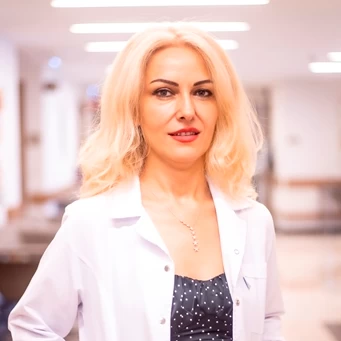Facial paralysis is a serious neurological condition that occurs when the nerves controlling the facial muscles are damaged for various reasons. It negatively impacts both the aesthetic appearance and daily life functions of the individual. In such cases, a multidisciplinary treatment approach is of utmost importance. As a Physical Medicine and Rehabilitation Specialist, I observe every day in my clinical practice how crucial physical therapy is for patients suffering from facial paralysis.
Causes and Symptoms of Facial Paralysis
The most common type of facial paralysis is Bell's palsy. Although its exact cause is not fully understood, it often develops after viral infections. Other conditions such as head trauma, stroke, brain tumors, ear infections, Lyme disease, and shingles (herpes zoster) can also affect the facial nerve and lead to paralysis.
The symptoms of facial paralysis include:
• Loss of forehead wrinkles
• Inability to close the eyelid
• Drooping at the corner of the mouth
• Difficulty speaking and chewing
• Decreased sense of taste
• Trouble controlling saliva
These symptoms can significantly affect both the physical and psychological well-being of the patient.
Why Is Physical Therapy So Important in Facial Paralysis?
In the treatment of facial paralysis, physical therapy not only aims to restore muscle movements but also works to rebuild facial symmetry, intermuscular coordination, and sensory awareness. Therefore, it is essential to implement a rehabilitation program tailored to each individual.
Before beginning treatment, a detailed evaluation of the patient's facial muscle strength, coordination, presence of involuntary contractions (synkinesis), muscle spasms, or atrophy is conducted. Based on this assessment, a personalized treatment protocol is developed.
Core Physical Therapy Methods I Use for Facial Paralysis
- Manual Facial Exercises: Controlled facial exercises performed in front of a mirror improve muscle strength and mobility. Movements such as forehead wrinkling, lip puckering, and eyebrow raising help retrain the facial muscles.
- Biofeedback: Patients observe their facial muscle movements on a monitor, which increases muscle awareness. This method is especially effective for those with synkinesis.
- Electrotherapy: Low-frequency electrical stimulation is used to activate paralyzed muscles. However, this method must be applied carefully and in a limited manner.
- Facial Massage and Manual Therapy: Soft tissue techniques improve circulation in facial muscles, reduce edema, and relieve muscle tension. It is particularly effective in the acute phase for patient comfort.
- Functional Re-education: Patients relearn how to perform facial expressions effectively in daily life. The goal is to restore natural functionality in actions like smiling, speaking, and eating.
- Neural Therapy: This modern complementary treatment involves local injections around nerves to regulate the autonomic nervous system. In facial paralysis rehabilitation, it supports nerve regeneration, improves circulation, and promotes reflex regulation.
- PRP (Platelet-Rich Plasma) Therapy: PRP, derived from the patient’s own blood, is injected into damaged nerve and muscle tissue. In chronic facial paralysis cases, PRP accelerates cellular repair and supports nerve healing. I typically integrate PRP with manual therapy and exercises.
How Long Does Facial Paralysis Treatment Take?
The earlier the treatment begins, the more successful the outcomes. Starting physical therapy within the first three weeks is critical for recovery. However, even in chronic cases, significant improvements can be achieved through physical therapy.
Treatment programs are typically planned as 2–3 sessions per week and may last from 2 to 6 months. Consistent participation in exercises during this period is key to treatment success.
Psychological Support and Multidisciplinary Collaboration
Depression, loss of self-confidence, and social withdrawal are common after facial paralysis. Therefore, psychological support should be integrated into the rehabilitation process. When needed, I collaborate with psychiatrists and psychologists to support the patient’s mental recovery.
Additionally, working in coordination with specialties such as ENT, neurology, ophthalmology, and plastic surgery is essential to properly treat the underlying cause of the paralysis.
Conclusion: Can Facial Paralysis Be Treated? Yes, With the Right Approach!
Facial paralysis is a complex condition that affects not only a person's physical appearance but also their emotional state. However, with timely initiation of a personalized and multidisciplinary physical therapy program, facial muscles can regain their function.
As a specialist, I aim to restore not just muscle function—but smiles. Because when the face begins to smile again, healing is not only physical, but also psychological.
Dr. Elif Berber
Physical Medicine and Rehabilitation Specialist


